Water conservation is an essential consideration when designing and managing Sonoma and Marin County landscapes. Our area enjoys a Mediterranean climate characterized by wet winters and long, dry summers with little rainfall. Plants that are suited or adapted to local conditions not only use less water but generally grow more successfully and robustly, with fewer insect and disease problems. They ultimately create a healthier, more beautiful and more sustainable landscape.
Below is a hand selected plant list for Sonoma and Marin counties that displays mostly native species that will thrive in our climate. You can search, filter and save specific plants to your plant list and also print plant cards.
-
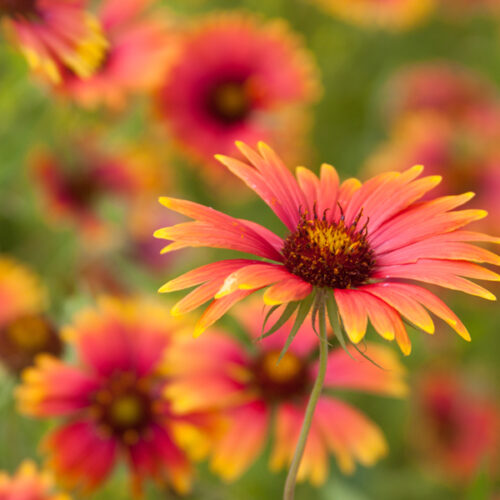
Blanket Flower
Gaillardia spp -
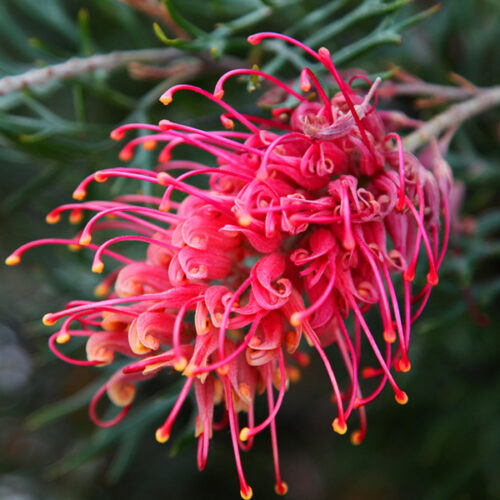
Grevillea
Grevillea spp -
California Native
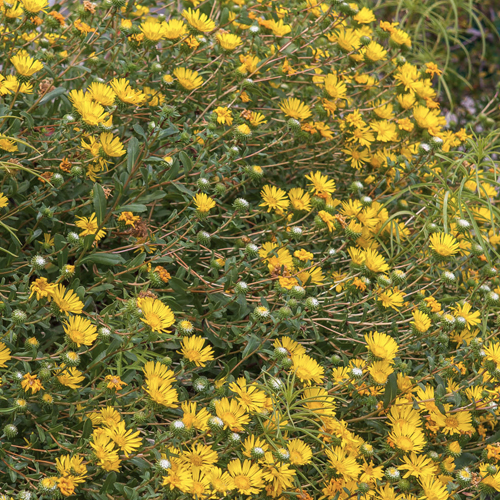
Gumplant
Grindelia spp -
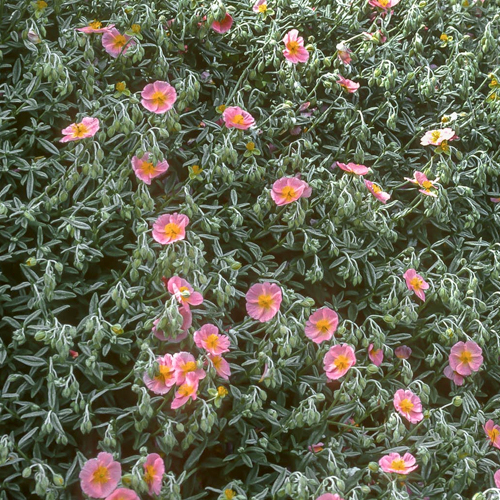
Sunrose
Helianthemum nummularium -
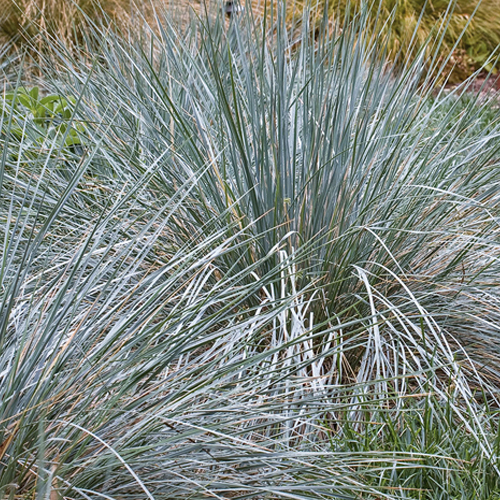
Blue Oat Grass
Helictotrichon sermpervirens -
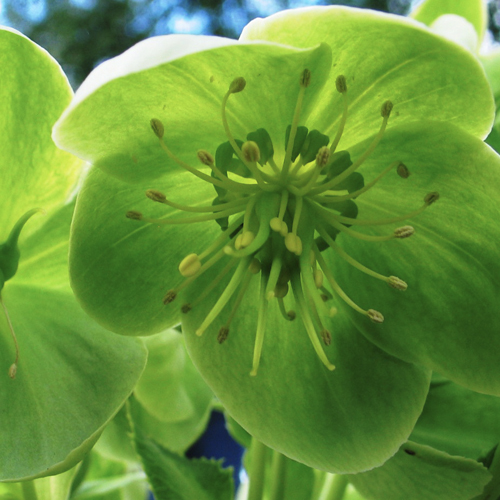
Hellebore
Helloborus spp -
California Native
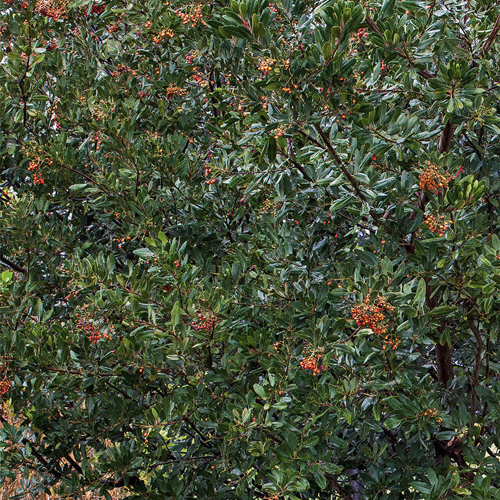
Toyon
Heteromeles arbutifolia -
California Native
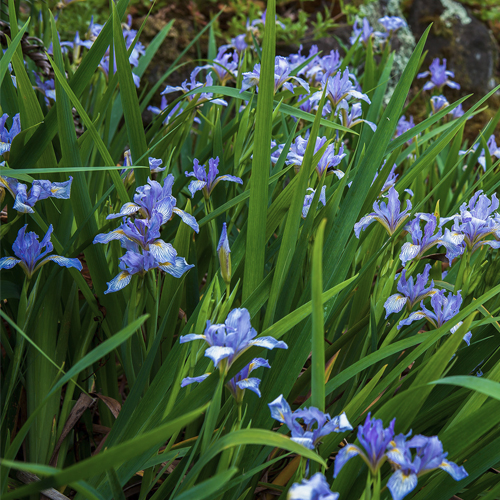
Douglas Iris, Pacific Coast Hybrids
Iris douglasiana & cvs -
California Native
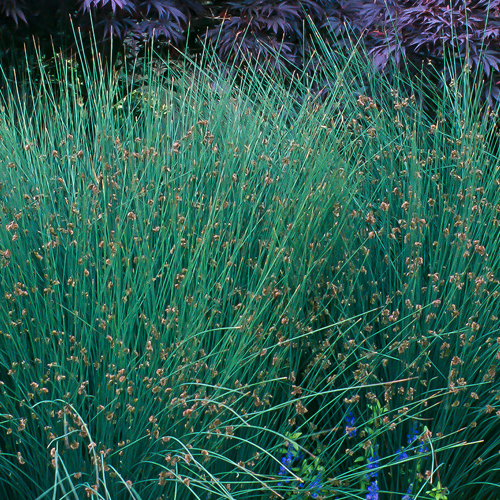
California Grey Rush
Juncus patens -
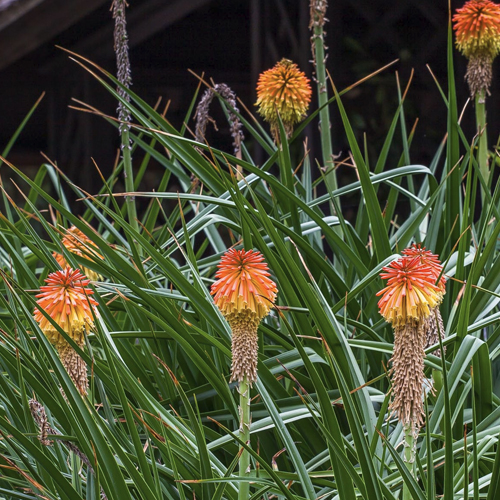
Red Hot Poker, Torch Lily
Kniphofia spp -
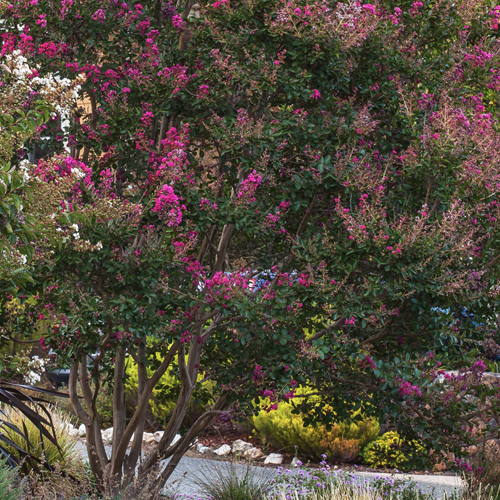
Crape Myrtle
Lagerstroemia indica -
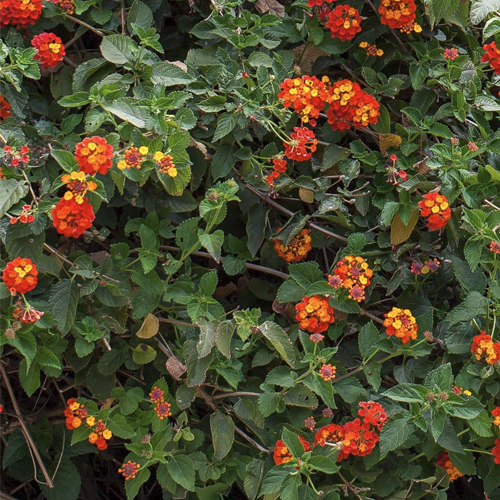
Lantana
Lantana spp & cvs


Blanket Flower
Gaillardia spp
Care:

Full Sun

Low

Sandy
Look:

Gray Green
leaves

Orange
flowers

Red
flowers

Yellow
flowers
Blanket Flower
Gaillardia spp
Care:

Full Sun

Low

Sandy
Look:

Gray Green
leaves

Orange
flowers

Red
flowers

Yellow
flowers
Low-growing, flowering perennials and annuals with daisy-like flowers in yellows and reds. Gaillardia x grandiflora is a hybrid that grows 2-4’ x 18-24” and may need less water than other hybrids. Many different varieties provide variations in flower color and size.


Grevillea
Grevillea spp
Ground Cover, Shrub
Care:

Full Sun

Partial Shade

Low

Most Soils
Look:

Medium
size

Small
size

Green
leaves

Cream
flowers

Pink
flowers

Red
flowers
Grevillea
Grevillea spp
Ground Cover, Shrub
Care:

Full Sun

Partial Shade

Low

Most Soils
Look:

Medium
size

Small
size

Green
leaves

Cream
flowers

Pink
flowers

Red
flowers
Group of flowering, evergreen shrubs and trees from Australia with many variations in growth habit and leaf shape. Red is the most common flower color, although some species flower in other colors.
Examples: G. ‘Canberra Gem’ (8-10’ x 10-12’) with needle-like leaves, G. ‘Noellii’ (3-4’ x 4-5’) also with needle-like leaves, woolly grevillea (G. lanigera, 3-6’ x 6-10’), the more prostrate C.I. ‘Coastal Gem’ (18” x 4-5’) and G. l. ‘Jade Mound’ (2’ x 4-5’), lavender grevillea (G. lavandulacea (2-5’ x 6-8’), and rosemary grevillea (G. rosmarinifolia, 6’ x 6’).


Gumplant
Grindelia spp
CA Native, Ground Cover
Care:

Full Sun

Partial Shade

Low

Well Drained
Look:

Green
leaves

Red
flowers

Yellow
flowers
Gumplant
Grindelia spp
CA Native, Ground Cover
Care:

Full Sun

Partial Shade

Low

Well Drained
Look:

Green
leaves

Red
flowers

Yellow
flowers
Group of herbaceous perennials in the sunflower family that are native to the Americas. Grindelia stricta is native to the west coast of America, including California, with yellow daisy-like flowers in the dry summer months. Spreading gum plant (G. s. var. platyphylla) is a low-growing groundcover form that can reach 6-10’ across. Suitable for meadow plantings.


Sunrose
Helianthemum nummularium
Shrub
Care:

Full Sun

Partial Shade

Low

Most Soils
Look:

Gray
leaves

Gray Green
leaves

Green
leaves

Orange
flowers

Red
flowers

White
flowers

Yellow
flowers
Sunrose
Helianthemum nummularium
Shrub
Care:

Full Sun

Partial Shade

Low

Most Soils
Look:

Gray
leaves

Gray Green
leaves

Green
leaves

Orange
flowers

Red
flowers

White
flowers

Yellow
flowers
Low-growing, evergreen, flowering shrub with soft green or gray-green leaves that spreads to about 3’. Flowers in spring to early summer. Many named cultivars provide flower colors that include red, orange, yellow, white, pink, and peach.


Blue Oat Grass
Helictotrichon sermpervirens
Grass
Care:

Full Sun

Partial Shade

Low

Well Drained
Look:

Blue Green
leaves

Silver
leaves
Blue Oat Grass
Helictotrichon sermpervirens
Grass
Care:

Full Sun

Partial Shade

Low

Well Drained
Look:

Blue Green
leaves

Silver
leaves
Mediterranean, cool-season bunchgrass that grows 2-3’ with blue-gray leaves and graceful wheat-colored stems of flower clusters in the spring. Pull out dead leaves rather than shearing.


Hellebore
Helloborus spp
Care:

Partial Shade

Shade

Low

Most Soils
Look:

Large
size

Medium
size

Green - Dark
leaves

Green
flowers

Pink
flowers

White
flowers
Hellebore
Helloborus spp
Care:

Partial Shade

Shade

Low

Most Soils
Look:

Large
size

Medium
size

Green - Dark
leaves

Green
flowers

Pink
flowers

White
flowers
Shade-loving perennials with attractive foliage that flower in winter and spring and may self-sow.
Examples: Corsican hellebore (H. argutifolius, 2-3’ x 2-3’), bear’s-foot hellebore (H. foetidus, 30” x 30”), H. lividus (18” x 3’), Lenten rose (H. orientalis, variable size), and hybrids.


Toyon
Heteromeles arbutifolia
CA Native, Shrub
Care:

Full Sun

Partial Shade

Low

Well Drained
Look:

Large
size

Medium
size

Green - Dark
leaves

White
flowers
Toyon
Heteromeles arbutifolia
CA Native, Shrub
Care:

Full Sun

Partial Shade

Low

Well Drained
Look:

Large
size

Medium
size

Green - Dark
leaves

White
flowers
California native, evergreen shrub or small tree often seen growing in Sonoma and Marin county wildlands. Lacy, white flower clusters in spring attract pollinators; red berries in winter provide a splash of color and an important food source for birds. The name “Hollywood” was born from the abundance of toyon in the hills of southern California and its resemblance to European holly. The cultivar ‘Davis Gold’ has yellow berries and may be more disease-resistant than the species.


Douglas Iris, Pacific Coast Hybrids
Iris douglasiana & cvs
CA Native
Care:

Partial Shade

Shade

Low

Most Soils
Look:

Green - Dark
leaves

Lavender
flowers

Purple
flowers

Violet
flowers

Yellow
flowers
Douglas Iris, Pacific Coast Hybrids
Iris douglasiana & cvs
CA Native
Care:

Partial Shade

Shade

Low

Most Soils
Look:

Green - Dark
leaves

Lavender
flowers

Purple
flowers

Violet
flowers

Yellow
flowers
Iris are a large and diverse group of perennials that grow from either bulbs or rhizomes. The California native Douglas iris and cultivars known as Pacific Coast Hybrids are an excellent choice for summer-dry gardens and understory plantings. Fall rain brings new growth in the form of thin, upright leaves, followed in late winter to early spring by the first blossoms. Douglas iris commonly ranges in color from lavender to purple, but cultivars are available in a range of colors including white and yellow. Established plantings can be lifted and divided after the first significant fall rain and either replanted or put into containers to share with others.


California Grey Rush
Juncus patens
CA Native
Care:

Full Sun

Partial Shade

Low

Well Drained
Look:

Gray Green
leaves
California Grey Rush
Juncus patens
CA Native
Care:

Full Sun

Partial Shade

Low

Well Drained
Look:

Gray Green
leaves
California gray rush is a go-to species for the summer-dry rain garden. It will thrive in moist conditions and its roots will help stabilize soil and filter stormwater runoff. It is also tolerant of extended periods of drought. Clumps of stiff, upright foliage provide an interesting contrast among other perennials. ‘Elk Blue’ is a widely available selection from Mendocino County. Its bluish gray foliage is shorter than the typical gray rush.


Red Hot Poker, Torch Lily
Kniphofia spp
Care:

Full Sun

Partial Shade

Low

Well Drained
Look:

Green
leaves

Orange
flowers

Red
flowers

Yellow
flowers
Red Hot Poker, Torch Lily
Kniphofia spp
Care:

Full Sun

Partial Shade

Low

Well Drained
Look:

Green
leaves

Orange
flowers

Red
flowers

Yellow
flowers
Mostly South African perennials with strap-like leaves and a clumping growth habit that are characterized by striking displays of brightly colored flower clusters on long, bare stems resembling red hot pokers. The majority of plants offered are cultivars of different sizes and various flower colors, including yellows and oranges. Sizes range from about 1-4’ tall.


Crape Myrtle
Lagerstroemia indica
Tree
Care:

Full Sun

Low

Most Soils
Look:

Medium
size

Small
size

Green
leaves

Blue
flowers

Lavender
flowers

Pink
flowers

Purple
flowers
Crape Myrtle
Lagerstroemia indica
Tree
Care:

Full Sun

Low

Most Soils
Look:

Medium
size

Small
size

Green
leaves

Blue
flowers

Lavender
flowers

Pink
flowers

Purple
flowers
Crape myrtle has become a ubiquitous street tree due to its attractive bark, fall color, and flowers all helping to provide year-round interest, as well as being of manageable size and tending not to lift sidewalks with its roots. The most commonly available crape myrtles are Lagerstroemia indica and many hybrids and their shrub forms, which may be less prone to mildew than the species. Flowers occur in late summer in white, pinks, and reddish purple. Crape myrtles are naturally multi-trunked, and plants grown as standards with a single trunk have a tendency to grow suckers that should be removed.


Lantana
Lantana spp & cvs
Ground Cover, Shrub
Care:

Full Sun

Partial Shade

Low

Well Drained
Look:

Medium
size

Small
size

Green
leaves

Green - Dark
leaves

Gold
flowers

Pink
flowers

Purple
flowers

Yellow
flowers
Lantana
Lantana spp & cvs
Ground Cover, Shrub
Care:

Full Sun

Partial Shade

Low

Well Drained
Look:

Medium
size

Small
size

Green
leaves

Green - Dark
leaves

Gold
flowers

Pink
flowers

Purple
flowers

Yellow
flowers
Evergreen shrubs and perennials for hot, sunny locations available in both upright and groundcover forms that flower from spring to fall with colors including purple, yellow, red, and pink. Two species, Lantana camara (4-6’ x 6-8’) and L. montevidenis (12-18” x 5-10’), are widely available along with many hybrids and cultivars offering a variety of colors and sizes.
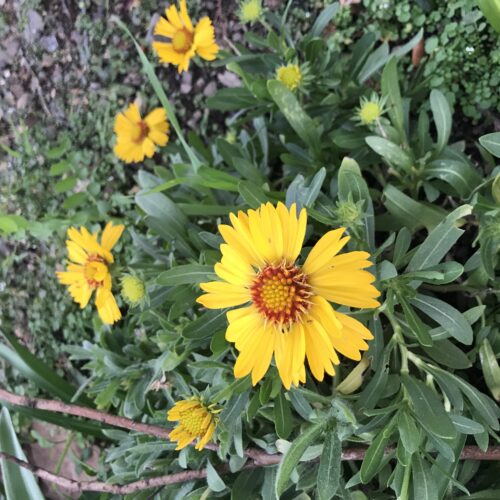
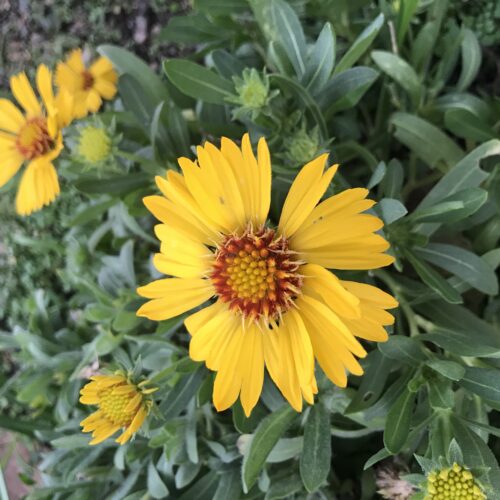
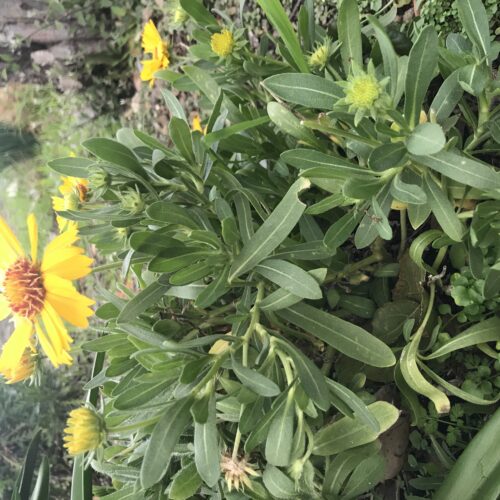
 Print this plant card
Print this plant card